Whether space is an issue or you just don’t like the idea of having too many wires running around the place, the best soundbars offer a neat alternative that sits underneath your TV to give TV sound a little more welly.
It’ll give dialogue a boost in clarity, improve bass performance and add back in the detail that goes missing when left in the hands of the tiny speakers built into your TV.
However, what started out as an easy way of improving your sound has slowly got more complicated as manufacturers have tried to make them more and more capable, including the addition of advanced audio like Dolby Atmos.
Of course there are a wealth of other options out there for different spaces and price points that are well worth exploring. Take a look at our pick for inspiration and check out our jargonbuster for all the terms you’ll need to know.
How to choose the best soundbar: a buyer's guide
Size and positioning
When you're buying a new soundbar it's important to consider design carefully. Not all soundbars are created equal. Some are very slim but come with a separate subwoofer; others are bigger and manage without. You’ll need to think about the space you have before choosing one, as unless you’re prepared to give your entire setup an overhaul, it can have a big say in what you can accommodate.
For example, if you’re putting it in front of your TV, you’ll want to check the soundbar’s dimensions to make sure your rack has the width and depth to hold it. You’ll also want to ensure your TV sits high enough so your chosen soundbar doesn’t obscure any of the screen.
If you’re planning on wall-mounting a soundbar, first check that the one you've chosen is suitable, and then check the fixtures and fittings you’ll need.
And if your soundbar comes with a subwoofer, make sure you’ve got space to house an extra box. We would recommend placing it to the side of the TV and as close to the soundbar as possible for the best integration.
Dolby Atmos considerations
Remember not to put a Dolby Atmos soundbar in an enclosed space. Atmos soundbars generally work by bouncing sound off your walls and ceiling to create a 3D surround sound effect. If you’re spending the cash on the extra processing, you won’t want to hide it away on a shelf in a TV rack, or the built-in height and side channels that fire sound upwards and outwards won’t be effective. Give an Atmos soundbar room to breathe for the best performance.
It's also important to realise that if you’re going for Atmos, you'll have to first make sure your setup supports it. If you’ve just bought a new Atmos soundbar and connected it to an older TV, you might be disappointed to learn that your TV isn’t capable of processing the Atmos codec. Some soundbars will allow you to run your HDMI sources through the bar instead, to bypass old telly tech but not all – and this won’t help built-in TV streaming apps. Just be sure to do your research before buying to ensure you get the most from your setup.
Inputs and extra features
Understanding your inputs is important. You’ll usually connect a soundbar to your TV via an HDMI or optical digital connection. More affordable soundbars will usually only offer the latter, but if you have the option for HDMI, take it. It will offer you the highest resolution sound decoding that your soundbar is capable of. You’ll usually need to connect it to an ARC or eARC HDMI port on your TV for it to work though, so check yours has one first.
Many soundbars come packed with features that make them just as useful when you’re not watching TV. Look out for Bluetooth connectivity, high-res network streaming and even multi-room playback. You’ll also find a growing number with built-in voice assistants, so be sure to get them set up if you’ll find them of use.
The best soundbars to buy in 2024
Sonos Arc
Best overall soundbar
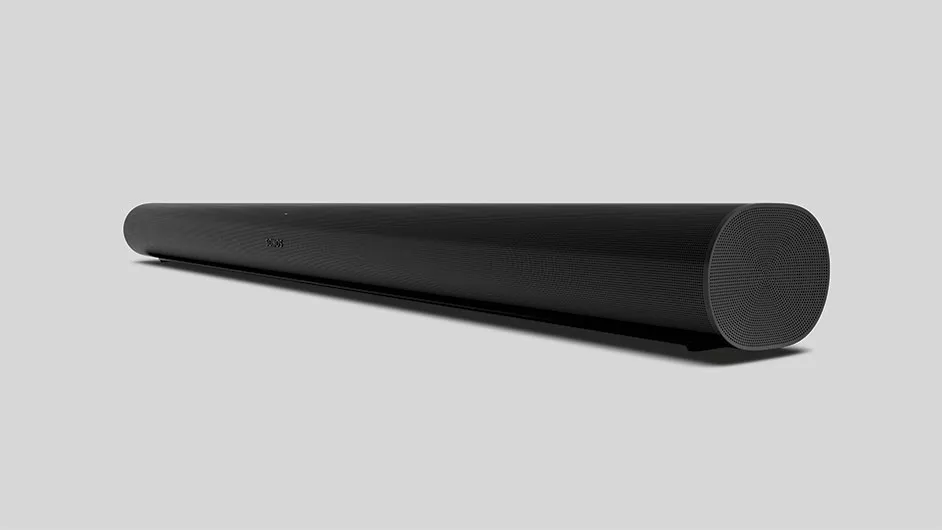
Price: £799 | Channels: 5.0.2 | Dimensions (hwd): 8.7 x 114 x 12cm | Weight: 6.3kg | Separate subwoofer: No | Bluetooth: No | Wi-fi: Yes | Atmos: Yes
Offering up a hard-to-beat balance of features, design, ease of use and performance, the Sonos Arc, the company’s first Atmos soundbar, is an easy product to love. There are very few soundbars out there that do so much so well.
No matter what you’re watching, it sounds superb. There’s a stunning clarity to dialogue, a fullness to bass and stacks of detail across the frequency range. But when you listen to an Atmos soundtrack, you really hear the added breadth and depth you’d expect from a more immersive 3D soundstage, with sound effects that are placed precisely around and above you, delivered by the Arc’s carefully angled drivers.
Of course, it’ll fit into a wider Sonos multi-room system if you have other Sonos speakers, or act as a superb sound system on its own for crisp, expressive music playback. Its size means you’ll probably want a 55-inch TV or larger though, as it’ll dwarf anything smaller.
Sony HT-G700
Best budget Soundbar
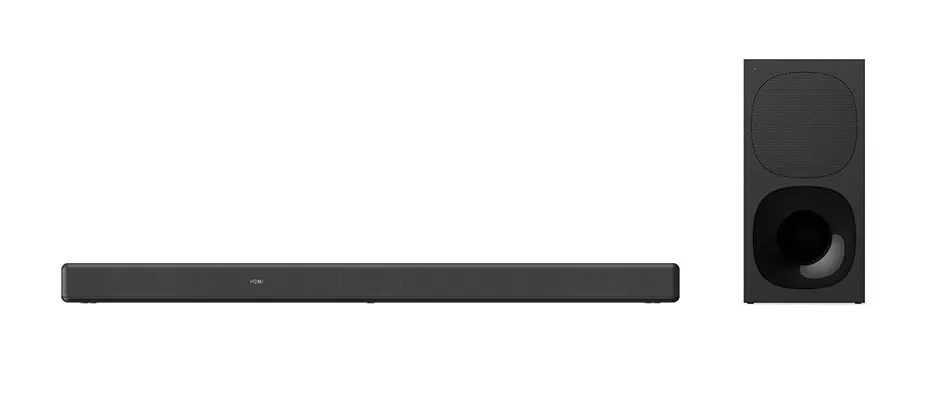
Price: £399 | Channels: 3.1 | Dimensions (hwd): 6.4 x 98 x 10.8cm | Weight: 3.5kg | Separate subwoofer: Yes (39 x 19 x 41cm, 7.5kg) | Bluetooth: Yes | Wi-fi: Yes | Atmos: Yes
Sony’s budget Atmos soundbar does things rather differently than the rest of the options here, in that it leans heavily on audio processing to add that Atmos height on a budget.
Of course, all Atmos soundbars are using some form of technical trickery to put sound where it isn’t, but there are no upwards firing drivers here – all of its channels face forward. Instead, the G700 employs Sony’s Immersive AE (Audio Enhancement) technology to do the Atmos heavy lifting, promising a 7.1.2ch performance from its 3.1ch set up.
Unfortunately, that bold claim doesn’t quite play through in its performance, but the Sony is a lovely sounding soundbar nonetheless. It adds clarity, depth and expression to a soundtrack, and pushes sound wider than the bar itself measures, but adds very little by way of discernible height when compared with “proper” Atmos soundbars.
For those on a budget, you’ll get some pretty impressively placed sound effects to the left and right, but you’ll want to save a little longer for a more convincing Atmos experience.
Sonos Beam Gen 2
Best all-rounder soundbar
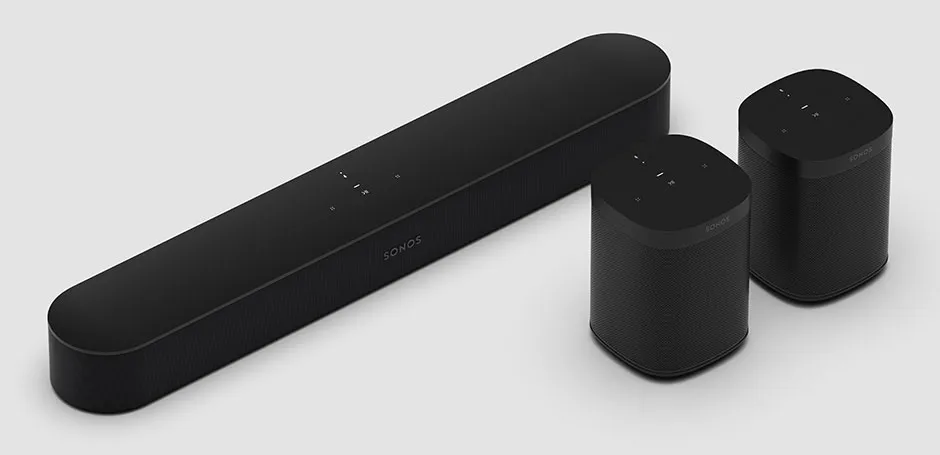
Price: £369 | Channels: 3 | Dimensions (hwd): 10 x 65 x 6.9cm | Weight: 2.8kg | Separate subwoofer: No | Bluetooth: No | Wi-fi: Yes | Atmos: No
Sonos gets a second nod in our best soundbars round up, and for good reason. If you aren’t fussed by Atmos, the Sonos Beam Gen 2 offers the very best sound you can get at this price.
From a design perspective, there’s little to fault. It’s compact, easy to install and will sit happily tucked in front of most TVs without blocking your view.
It comes with responsive touch controls that sit along the top of the bar, plus voice control from both Amazon Alexa and Google Assistant, as well as Apple’s Siri via AirPlay 2.
Four full-range drivers, one tweeter, three passive radiators and five class-D amplifiers are in charge of dispersing the Beam’s sound around your room, and the results are nothing short of superb.
There’s more scale and authority than we’d usually expect at this price, so booming action scenes never struggle to summon the volume or presence they demand. That’s helped by an impressive amount of bass weight for a soundbar without a sub, plus a midrange that serves up clarity and detail by the bucketload.
Perhaps most impressive, though, is the width of the soundstage offered up by such a compact bar, with effects placed far beyond the bar itself to the left and right and into the room with considerable depth.
The result is a truly immersive performance that you’ll struggle to top at this price.
JBL Bar 9.1
Best soundbar for flexibility
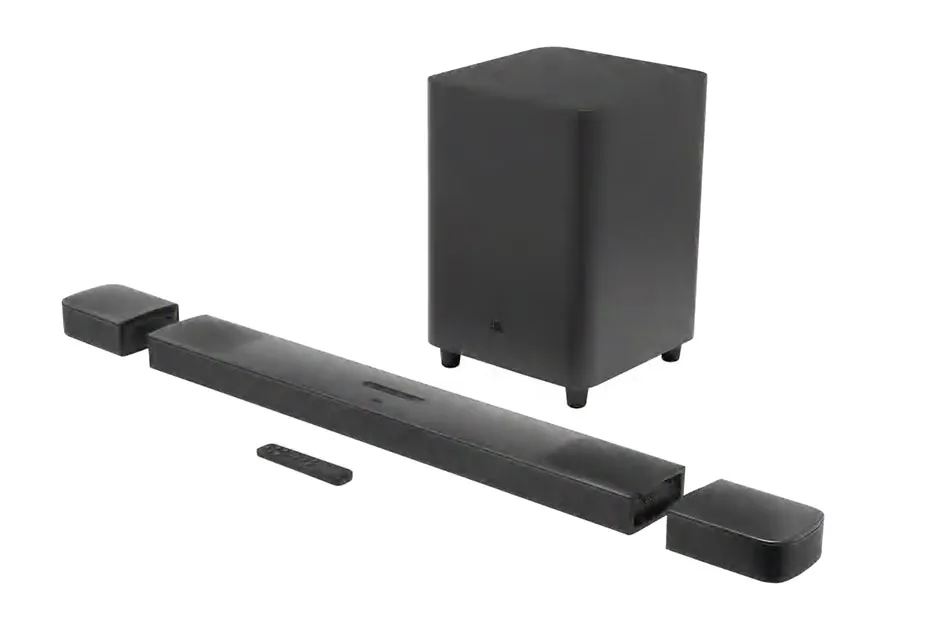
Price: £899 | Channels: 5.1.4 | Dimensions (hwd): 12 x 88 x 6.2cm | Weight: 3.64kg | Separate subwoofer: Yes | Bluetooth: Yes | Wi-fi: Yes | Atmos: Yes
Combining the convenience of a soundbar with the enviable effect of a proper surround sound system, the JBL Bar 9.1’s innovative design makes it a very compelling proposition indeed.
It might not be the most stylish soundbar to look at, but the beauty of the JBL Bar 9.1 lies in its flexibility. You can use it as a standard soundbar, or make use of its two removable modules, which come off either end of the main body and act as wireless rear speakers.
The whole setup adds up to a 5.1.4 Atmos system, with the main bar holding the three front channels alongside two for height, while the detachable speakers have one surround and one height channel each. There’s also a separate, sizeable subwoofer that you’ll need to make room for, which goes big on deep powerful bass.
Ideally the separate speakers should be placed just behind your viewing position, enabling you to get a decent surround sound effect in your room - and also a convincing sense of height - without the mess and complication of wires. They’ll last 10 hours on battery before needing to be recharged via the bar.
The result is very persuasive indeed, and you won’t find a standard soundbar that can deliver a performance that’s as immersive as this. It might not be the most expressive or subtle experience you can buy with this budget, but for pure cinematic wow factor, the JBL 9.1 delivers in spades.
Wharfedale Vista 200S
Best soundbar for affordability
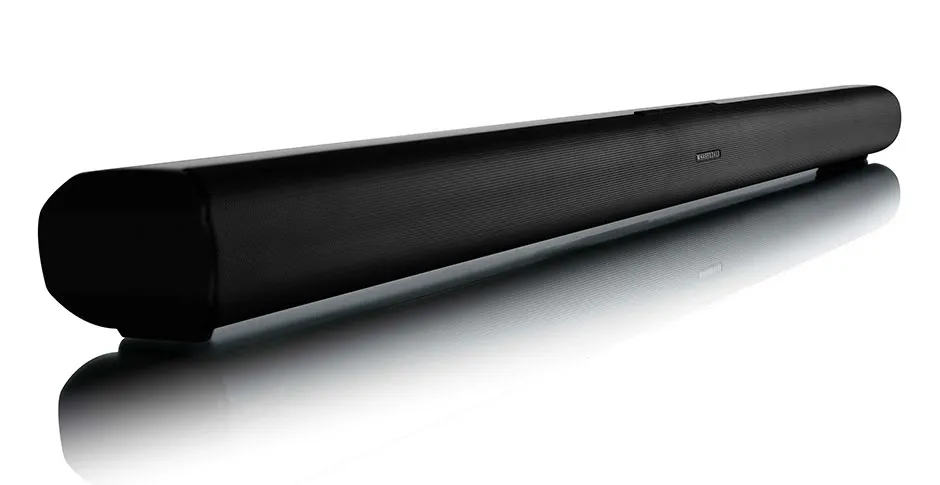
Price: £179 | Channels: 2.1 | Dimensions (hwd): 6.2 x 90 x 9.2cm | Weight: 2.5kg | Separate subwoofer: Yes | Bluetooth: Yes | Wi-fi: No | Atmos: No
If you’re looking to improve your TV’s sound without spending a fortune, the Wharfedale Vista 200S is a fantastic performer for the money.
You’d be hard pushed to say where they’ve scrimped to make it so affordable. It’s well built with an attractive design, offers multiple connections for hooking it up to your TV, including HDMI ARC, optical or coaxial, and there’s also built-in Bluetooth, for throwing music to the soundbar from your phone or tablet.
Of course there’s no Atmos support here, but there is a wireless subwoofer included, which we wouldn’t usually expect at this price. It’s effective too, and adds some welcome punch to the performance - you just need to find it a spot for it at the front of the room, as close to the soundbar as possible.
As a 2.1 system, you can’t expect too much from the Vista 200S in terms of surround sound effects, but it does offer up a reasonably large soundstage and, with 120W of amplification, plenty of volume too. It fills a reasonably sized living room with no issues whatsoever, and doesn’t sound pushed when the volume is nudged towards its max.
Dialogue is clear, and the midrange is packed with plenty of detail, plus dynamically it delivers too. That means whether you’re going all out on an action movie or just watching your favourite soap, it serves up an exciting, insightful performance that you’d expect to pay much more for.
Yamah YAS-209
Best soundbar for balance
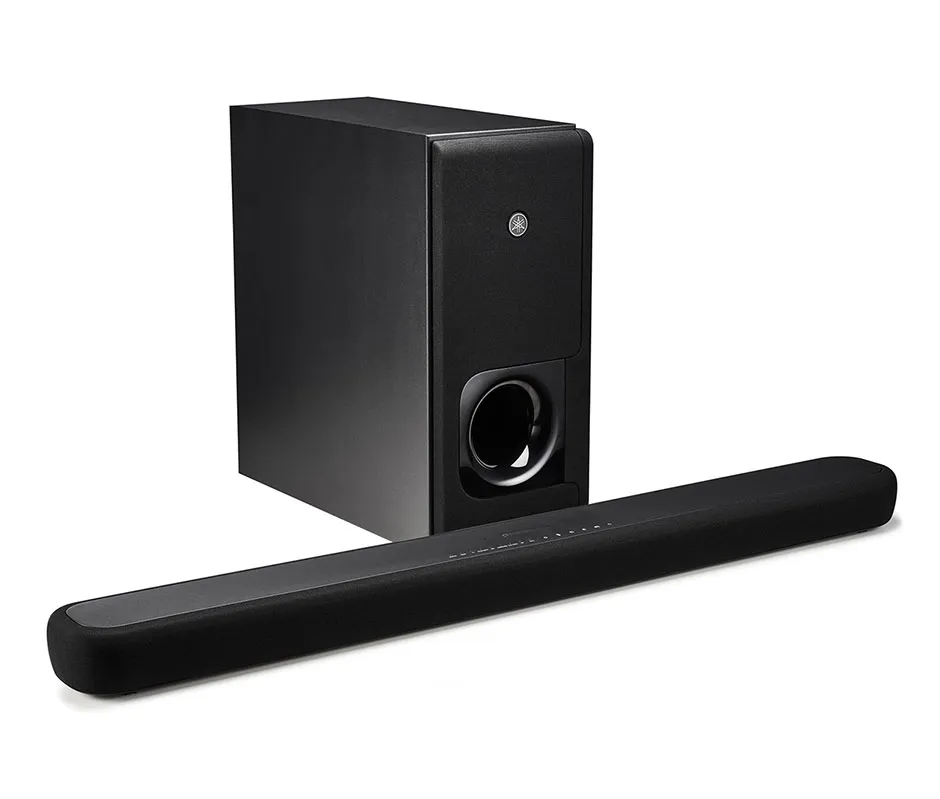
Price: £299 | Channels: 2.1 | Dimensions (hwd): 6.2 x 93 x 10.9cm | Weight: 2.7kg | Separate subwoofer: Yes | Bluetooth: Yes | Wi-fi: Yes | Atmos: No
Yamaha has an extensive reputation in the soundbar market, which makes its kit a pretty safe bet when looking for a good balance of performance and price. The YAS-209 is one of its more entry level options, but still offers plenty to love without pushing the budget.
Its design is softer than some, with curved edges and a fabric cover, though the separate wireless subwoofer is much more functional looking in comparison. The bar should fit in front of most TVs without blocking the view, while the sub will need hiding somewhere nearby.
Like the Sonos Beam, the YAS-209 comes with Amazon Alexa built into the bar for smart speaker functionality and some limited voice control, with two near-field microphones on hand for whenever you want to summon her.
As for how it sounds, the YAS-209 manages to deliver a pretty cinematic performance from its 2.1 channels. It does this with a bit of help from some processing, with DTS Virtual:X mode on board to add a sense of height if you want it, as well as some surround sound effects.
We actually prefer the more focused sound that we hear with it off, but do find choosing the movie mode instead helps to widen the soundstage and give the performance better authority. You could never find yourself wanting for punch, detail or excitement though, the YAS-209 has plenty of all three.
Jargonbuster
Dolby Atmos
Atmos is an object-based sound codec from audio whizzes Dolby, which adds height to a surround sound experience. In a proper cinema, this would be carried out by as many as 64 speakers, but soundbars will usually create the experience by bouncing sound off your walls and ceilings to reach the desired location.
HDMI ARC/eARC
HDMI ARC (audio return channel) and the new eARC (enhanced audio return channel) allow you to send video and audio both “upstream” and “downstream” via a single cable – before, you needed two. This is the connection you’ll need to use to connect to your soundbar to your TV via HDMI – it will usually be labelled on all kit from 2009 onwards.
Channels
You will often see home cinema sound discussed as channels, and written as 5.1ch or 7.1.2ch. These numbers literally refer to the amount of individual channels of sound that a soundtrack has been broken down into. The first number refers to the number of surround channels, the second to the subwoofer channels and, when there’s a third number, the number of height channels in an Atmos setup.
Subwoofer
A subwoofer is a separate piece of equipment that deals with the lower bass frequencies. When used with a soundbar, it will take over when things get too low for the soundbar to manage. This will generally be explosions in action movies, and kick drums and bass guitars in music.